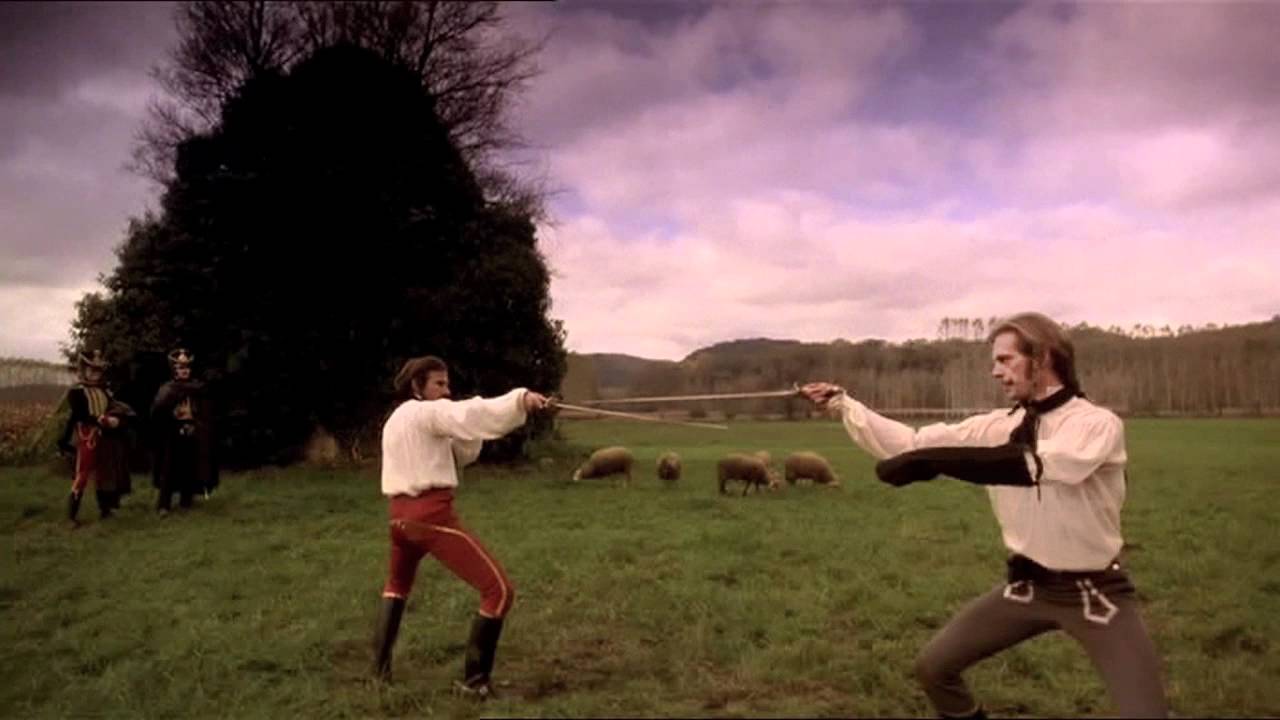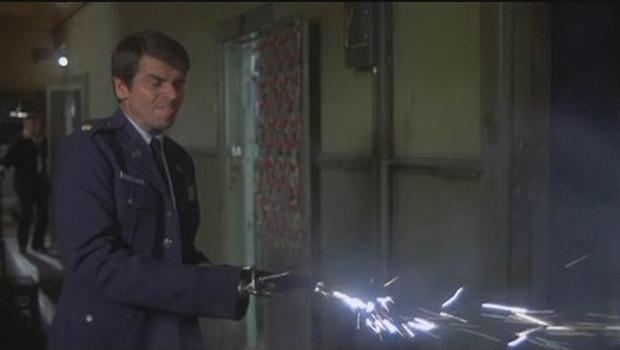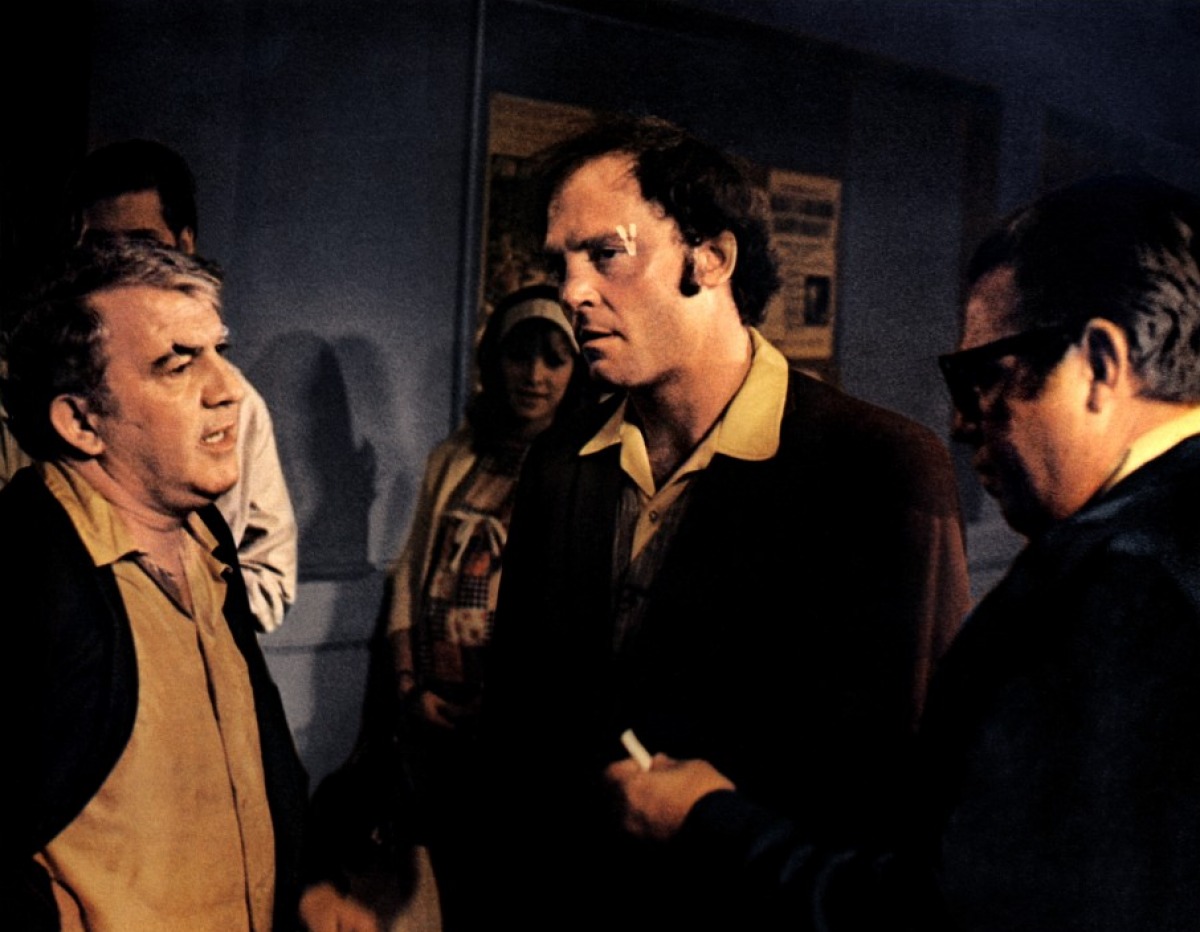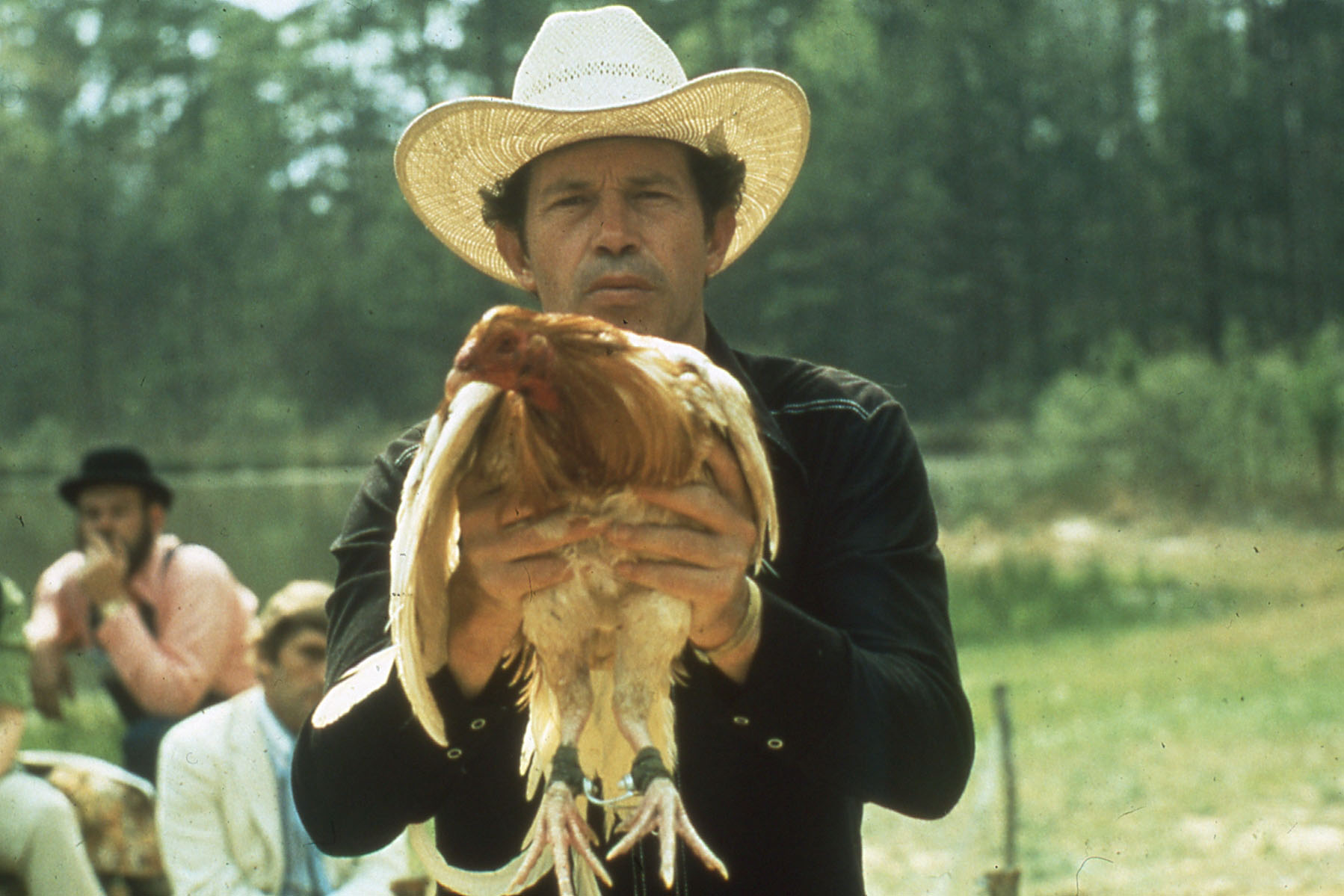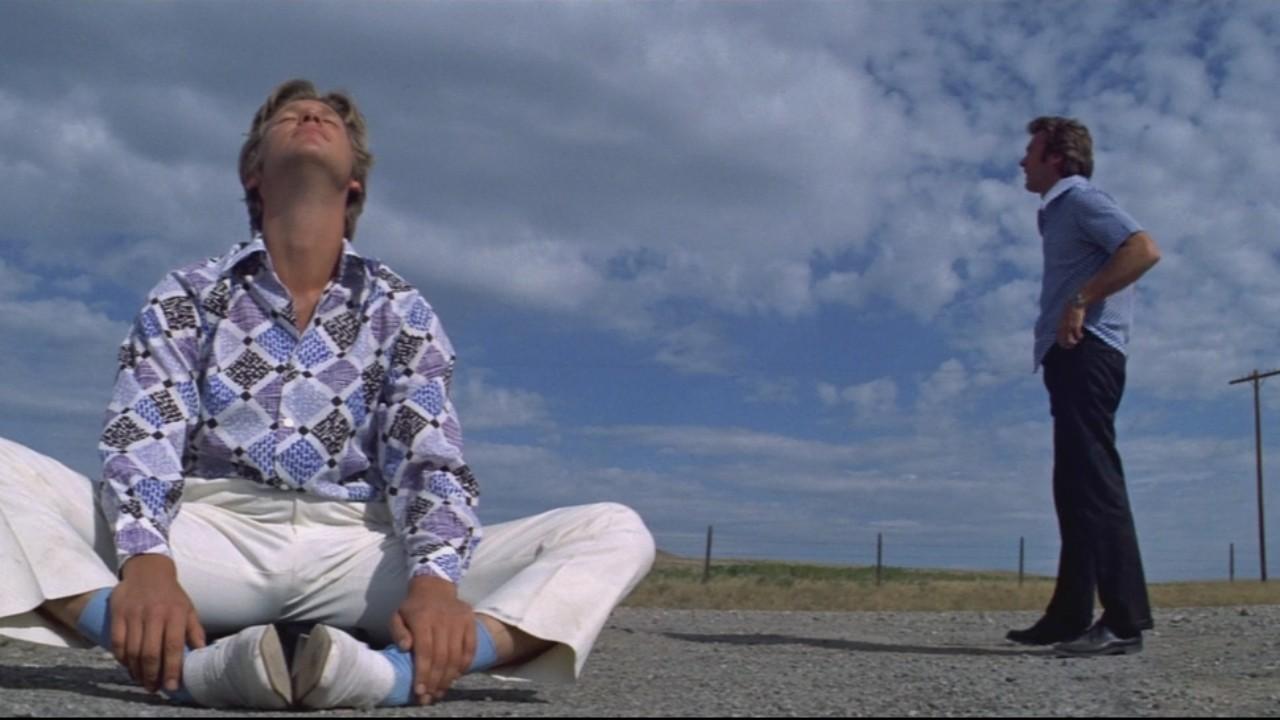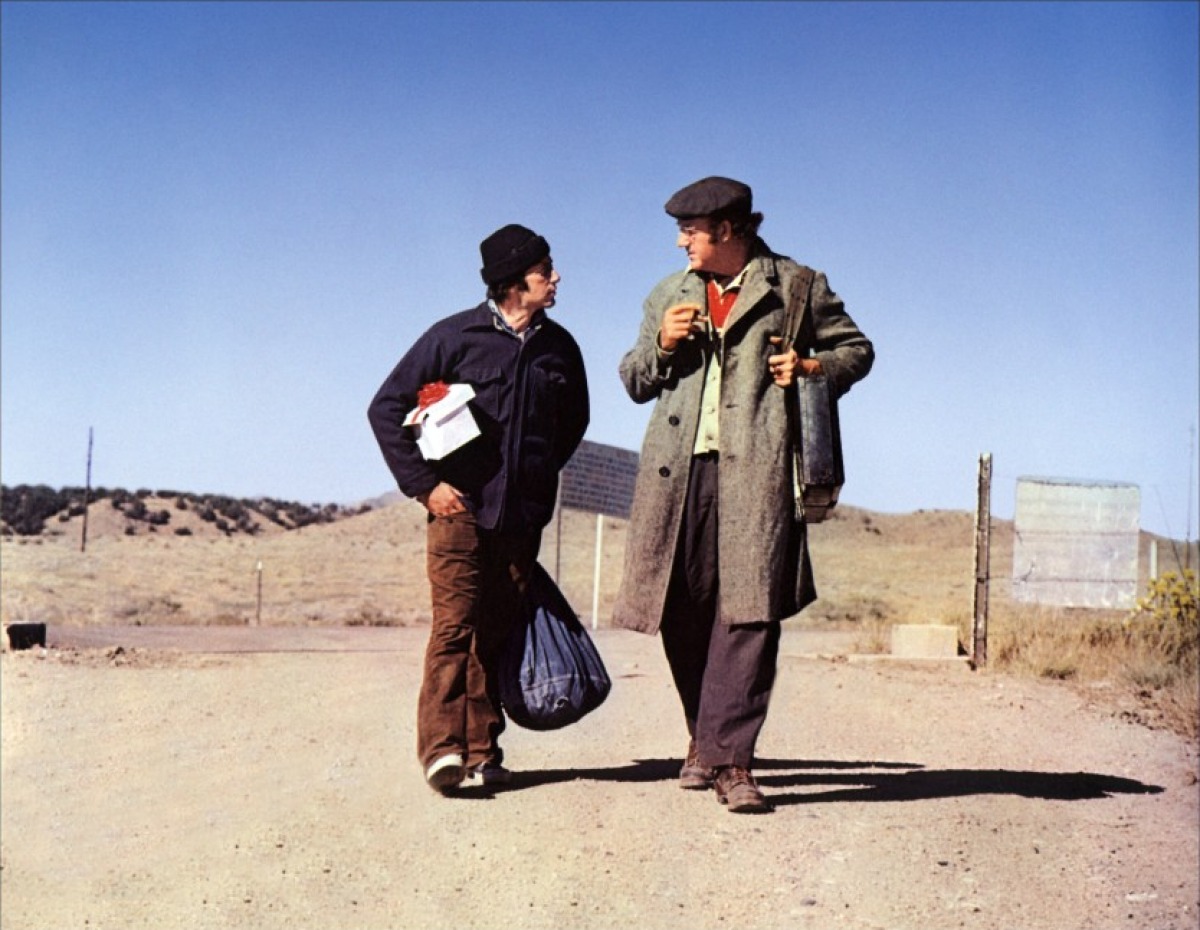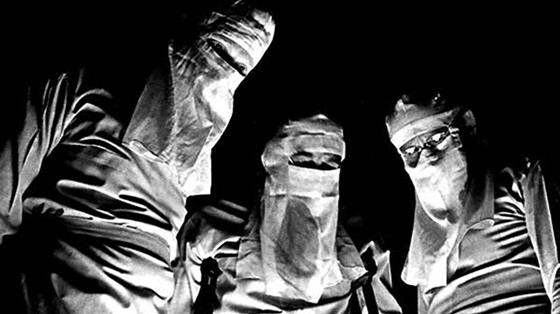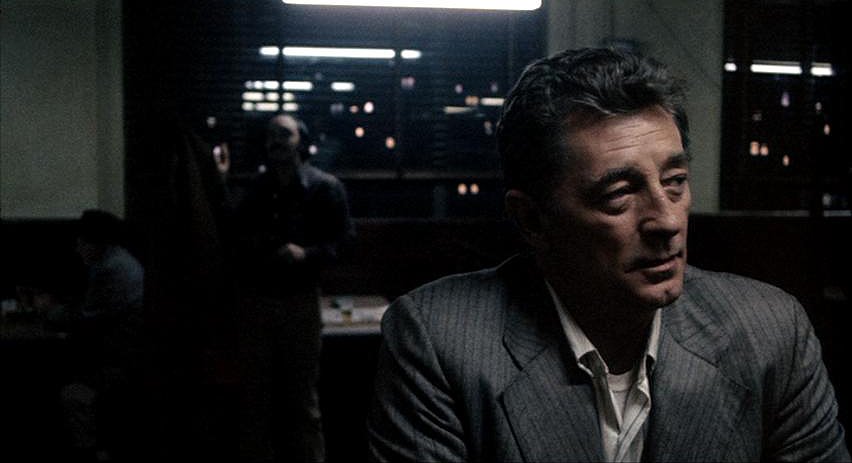8. The Duellists (1977)
The Duellist is another forgotten first film by a famous director, in this case Ridley Scott. The film was an impressive debut. It won the top prize for a first feature at the Cannes the year of its release.
Taken from a Joseph Conrad story about two officers in the French army during the Napoleonic wars who engage in a series of duels which drag out over a number of years, the film is a lush depiction of that era in its evocative attention to detail that served Scott so well in later films. Military uniforms, weapons, manors and set designs create another world as fantastic as the worlds of Blade Runner and Alien.
Director Scott proved himself in command of his craft with a series of well-staged and executed dueling sequences, some with swords, others with pistols, and still others on horseback. Frank Tidy, director of photography, added misty dueling fields at dawn and fire-lit interiors are beautifully rendered, which earned him an award nomination from the British Society of Cinematographers.
An impressive cast is headed by Harvey Keitel and Kieth Carradine, but also includes Albert Finney, Edward Fox and Tom Conti. At first glance Keitel’s casting seems strange in light of his usual New York street image, but in reality, it was a masterstroke.
Keitel’s character is easily offended and is quick to arrogantly use his superior dueling skills to extract his measure of pain. He is really a psychopathic street bully right out of a Scorsese film. Opposite him is Keith Carradine’s character, who is empathetic as a normal person caught in up in Keitel’s absurd and dangerous game.
7. Rolling Thunder (1977)
After success with Taxi Driver, Paul Schrader was the hottest young screenwriter in Hollywood. Producers stood in line to buy anything with his name on it. One of those scripts probably found forgotten in a desk drawer was Rolling Thunder and then quickly forgotten again as a film. This is a revenge story about a returning Vietnam prisoner of war who has trouble adjusting to his release from captivity.
Halfway through the film the story changes gears. He becomes the victim again in a robbery by thugs after being given a couple thousand silver dollars by grateful citizens for his service. His wife and child are mercilessly killed and he is left for dead.
Now the already mentally scarred solder (played by William Devane) has a purpose, which had eluded him since returning to the States. With the help of another troubled ex-POW, played by Tommy Lee Jones, he spends the rest of the film getting revenge. Revenge for everything: the war, the V. C., a country that doesn’t understand, as well as the killers who have now fled to Mexico.
Directed by John Flynn, who has to be one of the most underrated directors of the ‘70s, his tight, economical, no nonsense style is the perfect lens for playing out the cathartic violence which erupts in the Schrader script. Rolling Thunder is reputedly one of Quentin Terantino’s favorite films. As goes the teacher, so goes the student.
6. Fat City (1972)
Fat City is a film by a director John Houston, who made his prestigious reputation as a film maker some thirty years before starting work on this film in 1974. Fat City, a slice of life character study of down and nearly out boxers, is overshadowed by the classic films that Houston directed some thirty years before.
Fat City shows that despite his advanced age, Houston was still a director to be reckoned with. This little film about some third rate would-be fighters played out in skid row tenements and rundown gyms in and around Sacramento, California is not remotely the Treasure of Sierra Madre.
The film is a non-judgmental nod to American low life. Houston treats his dead-end characters with humanity and sympathy as his camera documents the train wreck that is their lives. He is a master story teller and student of the details that separate average films from great ones. Another talent that Huston is famous for is lighting up the screen with wonderful performances from his actors.
Young Jeff Bridges and then unknown Stacy Keach as the hapless pugilists turn in nuanced performances under Huston’s direction, but it is Susan Tyrrell who steals the show. She was nominated for a supporting actress award for her portrayal of an alcohol-soaked bar fly who alternates between sweetness and meanness. Conrad Hall’s photography proves that he can shoot in broke down bars and gyms with such skill you can almost smell the stale beer and sweat.
5. Cockfighter (1974)
What list of forgotten ‘70s films would be complete without an appearance by great director Monte Hellman? His existential masterpiece Two-Lane Blacktop would be a likely choice, but it is not as forgotten as it once was. Instead, Cockfighter seems to encompass all the bases. Forgotten, overlooked and overshadowed, Cockfighter is a true diamond in the film rough. It was shot by Nestor Almendros, who was a great cinematographer, Academy Award winner, and a friend of Hellman
Warren Oates portrays a man who wants to become Cockfighter of the year in the sub-cultural world of game cockfighting. Oates, thought of as only a character actor, he carries the entire film. Like a monk, he has taken a vow of silence as penance for past sins. Oates is a good actor and shows it by spending most of the film with no dialogue, only hand gestures, and expressive face and body movements.
Most of the action in this film of roosters fighting to the death to provide men amusement and a gambling opportunity would be illegal to film today. It is not a film for the squeamish or PETA supporters. Even in 1973 the film was almost blocked from being released. Produced by Roger Corman, and despite a very low budget, Cockfighter was reportedly the only film Coman’s New World Pictures ever lost money on.
Hellman is an intelligent filmmaker whose films work on different levels all at once. Here, he documents with loving detail a brutal sport which appeals to many men throughout the world; in this case rednecks of the American south, people that the southern writer Harry Crews once described as “right and proper Englishmen after two hundred years of poor diet and intermarriage.”
On another level Hellman seems to examine the human trait of questionable ambition and self-delusion. The men, like the cocks, seem powerless to alter their destines, even though they have substantially larger brains then the BB-sized ones in the birds. Given the choice of a beautiful woman and an idyllic life, Oates’ character in the end opts for dusty, blood-splattered barn yards. After all, Oates wants to become Cockfighter of the Year. What could be sweeter?
4. Thunderbolt and Lightfoot (1974)
Thunderbolt and Lightfoot has an interesting place on this list. Some films here have been overshadowed because of a director’s success. Thunderbolt and Lightfoot seems lost because of a director’s failure. This film is Michael Cimino’s impressive first feature as director. It signals that an important new talent was on the scene.
Cimino’s next film will become an American classic, proving that promise. At the pentacle of success, Cimino’s third film will have it all chasing down around him. Under the rubble is Thunderbolt and Lightfoot.
Starring Clint Eastwood and Jeff Bridges, this early “buddy” film far exceeds the usual mundaneness of this popular Hollywood mainstay. Cimino manages to instill the tired formula with humor and sometimes touching emotional depth. Bridges got an Oscar nomination for his portrayal of a brash young criminal who displays youthful bravado and callousness. In the end, his performance transcends our expectations and rings empathy from the audience.
Eastwood is Eastwood, perhaps pushing the range with more humor than we usually see from him. George Kennedy is on hand as well as Gary Busey to round out the cast.
Cimino keeps the pace fast and unpredictable as he spins out the plot of hapless criminals out to retrieve money hidden after a big score. When that fails to materialize, they decide to commit the crime again. It is a caper not so much dependent on intelligence, split second timing or cleverly overcoming obstacles; these thieves are putting their faith in an anti-tank weapon for success.
Along the way Cimino crafts a memorable testament to what can be achieved with a one-dimensional American move star and a standard Hollywood formula.
3. Scarecrow (1973)
Scarecrow turns up on this list because it is a largely forgotten film despite sharing the Grand Prix at the 1973 Cannes Film Festival. This was no small accomplishment for the young Jerry Schatzberg, a former fashion photographer-turned-filmmaker. It came on the heels of his well-received first film, Panic in Needle Park.
After all, Scarecrow was an American film the French could love. A “road movie,” it is about quintessential American characters making their way across the vastness of the American landscape following their version of the American dream.
The film depicts a couple of likable drifters played by Gene Hackman and Al Pacino, both at what proved to be the dawn of vast and impressive careers. The two characters did not buy into the hip oppressed anti-hero vibe on display in most road movies of the era.
Instead, the film depicts a softer, nobler version of the American road, more of a Carl Sandburg, “big shoulders” America. An America where two guys can meet up and plan for a life as future business owners while they hitchhike in tattered clothes. It’s the good mythic America.
Along the way there are some adventures: some laughs, a few friendly ladies, a bit of brawling and even a stint in jail, and it’s all part of that big, easy, forgiving, optimistic American landscape that we may never see again. If we ever did. The film ends bleakly for the boys; after all, this is the era of the new American cinema where happy endings were not essential.
Schatzberg gets great performances from his actors and handles some difficult emotional scenes with a controlled, well-balanced style. Vilmos Zsigmond’s camera is as at home filming the view from the American back roads as he is later in the film’s urban surroundings.
The film closely mirrors the career of its director Jerry Schatzberg. Like the characters of Scarecrow, who start out their journey with promise only to end in hopelessness, so was it to be with Schatzberg’s directorial career. Although he was to direct for another thirty years, Scarecrow will most likely be the high point and the film he will be remembered for.
2. Johnny Got His Gun (1971)
Johnny Got His Gun was directed by Dalton Trumbo from his 1931 anti-war novel of the same name. One of the blacklisted Hollywood 7, this project marked his return to Hollywood after years of apparent exile. The talented screenwriter, however, had been working all along under assumed names, even winning an Academy Award for Lonely Are the Brave in 1962.
The film won Grand Prize of the Jury at the Cannes Film Festival the year it was released, perhaps fueled by political sentiment against the Vietnam War rather than cinematic achievement. The film suffered by being mostly ignored in this country and not much supported by its establishment studio for probably for the same political reasons.
Timothy Bottoms plays a World War One soldier hit by a mortar shell on the last day of the war. It leaves him physically devastated: no arms or legs, no sight, no voice, no hearing, but mentally intact. The film alternates between flashbacks of his past life and the grim reality of his present condition. It is a sad film with difficult subject matter but should be seen by all young men who think war might be fun.
1. The Friends of Eddie Coyle (1973)
Peter Yates’ Boston crime drama The Friends of Eddie Coyle is perhaps the most underrated of all the films on this list. All of the elements of classic filmmaking are on display in this sad, realistic depiction of life inside Boston’s Irish underworld. Direction, writing and performance come together in startling harmony.
Yates is in top form as director crafting a film while at the same time is excitingly suspenseful as it is perceptive of the sad, all too human failings of his characters. His 1967 film Bullet proves, if Yeats is in top form, he is good, he is very good.
The film’s milieu was perhaps the first to explore the world of the Irish mob – territory that in later years would became well-traveled by other directors. The story and script are first-class. This was adapted from the George V. Higgins novel, a book once described by Elmore Leonard as the best crime novel ever written. It depicts a thieving world that is totally devoid of honor, or much humanity. It is a world where happiness, goodness and light have long ago given way to just dark, raw, animal survival.
At the center of this hell is Eddie Coyle, played by Robert Mitchum, still in top form while nearing the end of an iconic career. A low level gun runner with a sick wife and a federal conviction hanging over him, his sad, tired eyes and deeply lined face speak volumes about his place at the end of the rope.
In one eloquent scene he sits with his crime associate, played by Peter Boyle, at hockey game. They watch Bobby Orr play. In the end, the Boyle character will have Eddie killed out of his own instinct for self-preservation. Here, they share a beer and muse about the great life and career of the young star player: “24 and already the world’s best hockey player.” Eddie muses in wonderment. The line stands in mute counterpoint to his own bleak life and future.
The film was well-received and got great reviews, but in spite of that it went largely ignored. At Academy Award time there was talk of a well-deserved nomination for Mitchum. In the end the nomination ended up totally disregarded, just like Eddie Coyle.
Author Bio: Larry Salvato is a filmmaker and film journalist. He co-authored Masters Of Light: Interviews With Cinematographers which has been re-issued. by UC Press. He lives in Santa Fe New Mexico.
